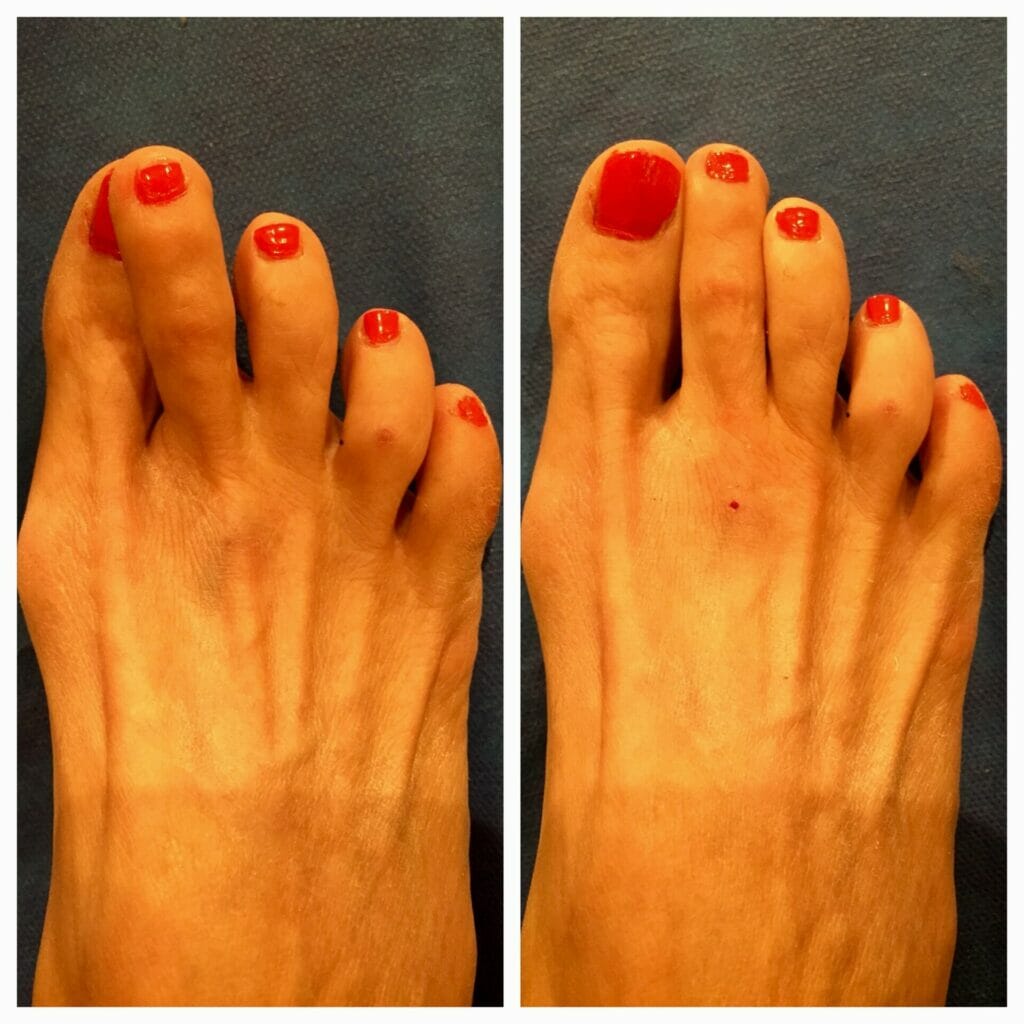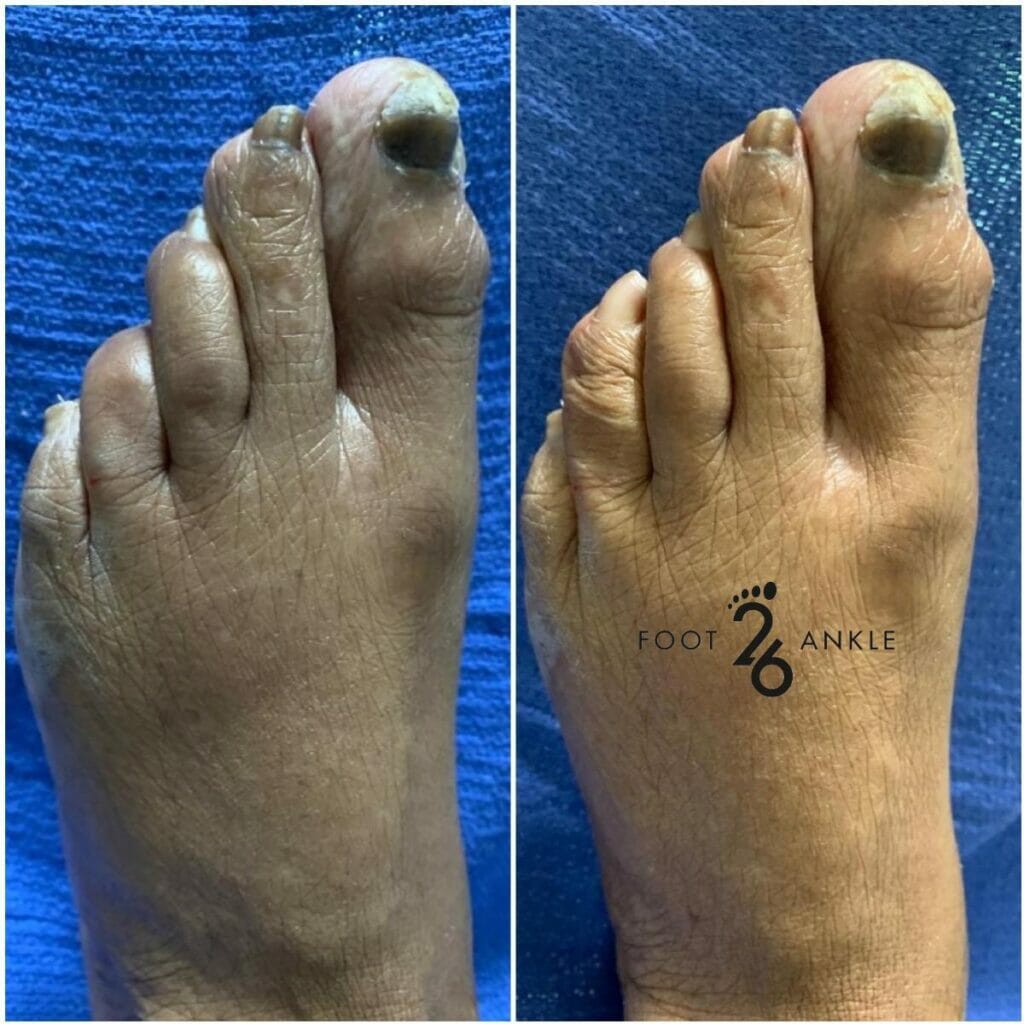The 26 Review
- What is Hammertoe Tendon Release A procedure used to fix flexible hammer toe(s)
- How The tight tendon (top or bottom of the toe) is released
- Why A minimally invasive procedure to relieve pain and avoid surgery
- Recommended for Patients who want to avoid surgery
- Length of Treatment Less than 5 minutes
- Downtime Minimal to no downtime

Let’s take a closer look…
As previously mentioned, hammertoe is when one or more toes have an abnormal bend in the middle of a joint. This deformity typically occurs because of an imbalance in the muscles, tendons, or ligaments that usually hold the toe straight. There are a few different categories of hammertoes, including mild hammertoes and severe crossover toe hammertoes. That being said, for a hammer toe release procedure, flexible hammertoes will be targeted. When the hammertoe is flexible, the toe can be manually straightened through a tendon release or tendon transfer procedure. A tendon release oftentimes requires a small incision on the bottom of the toe to surgically cut (or release) the tendon, in order to return the toe to its normal, straight position. There are two different in-office release procedures, a flexor tenotomy and an extensor tenotomy. Continue reading on to learn more about the hammertoe tendon release procedures.
Procedure Details: Pre, During & Post Surgery Expectations
In preparation for a tenotomy, pre-operative meetings with a podiatrist are highly recommended, and usually required. During those meetings, the procedure will be discussed and explained thoroughly. Patients will be informed of the local anesthesia used and it is important to inform the medical professional of any anesthetic allergies. Lifestyle changes may need to be implemented before the procedure can take place. Habits like smoking may need to halt, in order to decrease the risk of infection and blood clots. Seeing as a tenotomy is an outpatient, in-office procedure, patients should plan to minimize activities for the remainder of the day. On the day of the tenotomy, the medical profession will ask their final questions, do a final physical examination, and cleanse the affected area, prior to beginning.
A flexor tenotomy is a low-risk, simple procedure that corrects hammertoe deformities. This type of tenotomy can be performed in the office without the need for a large incision. To begin the affected toe is injected with anesthesia. Once the toe is numb, a small needle will enter the underside of the toe at the location of the flexor tendon. The needle is then used to release the tendon, relieving the contracture and straightening the toe.
An extensor tenotomy is another minimally invasive procedure used to release the hammertoe tendon. Local anesthetic will be used to numb the area surrounding the hammertoe. A small incision will then be made on the top of the toe, allowing the doctor to release the affected tendon. Once the tendon has been incised, the toe should point forward, returning to its natural position. At the end of the procedure the incision will be closed with taping or a stitch.
After the toe has straightened a soft splint or taping is applied. This splint should be kept intact for at least a week to allow the toe enough time to heal in a straight position. Dressings are allowed to be removed about a week later. At the week mark following either procedure, patients typically can return to their normal shoe gear and normal activities. That being said, the shoe wear worn should be supportive and comfortable. Patients should avoid wearing high heels or pointed shows until fully recovered. There is usually minimal pain associated with these procedures, allowing patients to quickly return to their normal activities.
Benefits and Risk Factors
Like most surgeries, there are serious benefits and risk factors to consider before getting the procedure done. Speaking with a podiatrist about any questions or concerns is highly recommended. The main benefits that come with the hammertoe tendon release procedure include regained mobility in the toe(s), pain relief, and improved balance and/or flexibility. With every surgery there comes the potential risk for problems. Luckily most potential issues associated with this procedure are preventable and fixable. During the procedure some issues that could arise include infection, nerve damage, blood clot formation, and/or a bad reaction to the anesthesia. Patients should be aware that there is a small chance the hammertoe(s) will redevelop, or the procedure may not be effective. However, if the underlying muscle imbalance and instability is addressed prior, they are less likely to return. If you or someone you know is suffering from flexible hammer toe(s), consider speaking with a podiatrist to determine which treatment plan is best.
